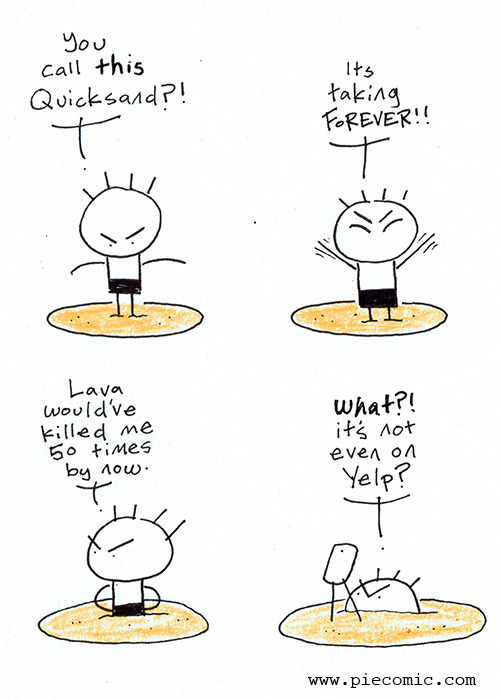Picture: the 152 cm diameter Haiku ceiling fan from Big Ass Fans. Power consumption is 2-8 watts for normal range of use.
----------------------------------------------------------------------------------------------------------------------------------------------
----------------------------------------------------------------------------------------------------------------------------------------------
Compressor-based cooling or air-conditioning (AC) puts increasing pressure on electric grids worldwide. In the USA, the birthplace of the technology, AC accounts for approximately 20% of year-round electricity consumption by American households, and 15% of total electricity use. [1] The widespread use of AC explains in large part why Americans use so much more electricity than Europeans: AC electricity use by an American household equals 60% of all electricity used by the average European household. [2]
Except for the few temperate regions on the West Coast, air conditioners are now standard in most American homes. [3] While only 12% of American households had AC in 1960, this number increased to 87% in 2009. [1][3] Furthermore, the average air-conditioned home consumed 37% more energy for cooling in 2005 than it did in 1993 – in spite of a 28% increase in AC energy efficiency. Part of the increase in energy use is due to the switch from window units (which cool one room) to central air-conditioning (which cool the whole building), and in part to the growing cubic footage of houses and apartments. [1]
Peak Power Demand
Even worse is the impact of air-conditioning on peak power demand. Obviously, the use of AC is not spread equally throughout the year, but concentrated in the summer months. On very hot days, many air-conditioning units are set to a maximum position, and as a consequence demand for electricity spikes. Hundreds of American power plants and a great many miles of transmission and distribution lines are needed on average only two or three days per year, while they sit idle for the rest of the time. Peak power demand is growing faster than average power demand, and compressor-based cooling is an important reason for this. [4] [5]
When we look at greenhouse gas emissions, another problem comes to light. AC not only produces emissions originating from electricity production. There is also the leakage of refrigerants, which are gases that -- although they remain in the atmosphere for a shorter time -- have a much higher global warming potential than CO2. The irony is that the substantial greenhouse gas emissions from air-conditioning bring us hotter summers, which in turn stimulates the use of air-conditioning. Another feedback loop is the “heat-canyon effect”: by blowing warm air out from buildings, AC heats up the streets, in its turn raising the need for more AC. [1] [6]
----------------------------------------------------------------------------------------------------------------------------------------------
AC electricity use by an American household equals 60% of all electricity used by the average European household
----------------------------------------------------------------------------------------------------------------------------------------------
While the USA remains the absolute champion of air-conditioning, the technology is also gaining importance in the rest of the world. For example, between 1997 and 2007, the number of Chinese households owning air-conditioning tripled, with the annual number sold reaching more than 20 million. [1] By 2020, energy consumption for air-conditioning in India is projected to grow almost tenfold compared to its 2005 level. [1] Even in the temperate climate of Europe, AC is advancing, especially in the commercial sector. For example, in the UK, based on currents trends, 40% of commercial floor space will have AC by 2020, compared to 10% in 1994. [6]
The Historical Evolution of the Fan
Throughout history, humans have used energy to keep themselves warm during the winter months. The use of energy to keep cool in summer, however, is a relatively recent phenomenon. Before the advent of air-conditioning in the first half of the twentieth century, buildings in hot climates were designed for natural ventilation (see further), and people adapted to the heat by changing their routines. However, air-conditioning was not the first technology that used energy for cooling: circulating fans predate AC by decades.
For most of history, fans were human-powered. Hand-held fans were used by ancient Egyptians, Babylonians, Persians, Chinese, Greeks and Romans. Most often, fans were waved by servants in order to cool their masters and to scare away insects. The folding fan, which people used to cool themselves, was invented by the Japanese in the ninth century, and introduced to the west by Portuguese sailors during the Renaissance. [7]
A remotely operated punkah, 1863.
The first remotely operated fans were “pankha” or “punkah”, developed in the 1500s in India and the Middle East. These rectangular canvas covered frames, suspended overhead, were waved back and forth by servants (called “pankwallah” or “punkawallah”), who pulled a rope against a counterweight while seated outside the room. [10]
Rotating fans appeared in the eighteenth century, and these were initially human-powered, too. During the same century, however, clockwork fans appeared, driven by a wind-up mechanism. In the nineteenth century, fans were powered by waterwheels, steam engines, or small water turbines running on tap water from the town mains. The first electrically powered circulating fan appeared in the USA in 1882.
How to Keep People Cool?
The four environmental factors that determine human thermal comfort are air temperature, air velocity, air humidity, and radiant temperature. Each of these variables can be manipulated to cool (or heat) people.
Air-conditioning lowers air temperature and (if necessary) air humidity. A lower air temperature increases heat loss from the body through convection, while a lower air humidity increases heat loss from the body through evaporation of moisture from the skin (which also occurs when we are not sweating). Circulating fans increase air velocity, which accelerates heat loss from the skin through convection and evaporation. Heat loss through evaporation increases with the square of the air velocity. [8]
Moving air. Photo credit: Amancay Maahs.
Radiant cooling -- another method of keeping humans comfortable -- works by lowering the temperature of the surfaces in a space. This is achieved by circulating cool water through plastic tubes in building surfaces, such as walls, floors, ceilings, or in modular panels. Radiant systems cool people by increasing heat loss from the body through radiation, but there is also an indirect, limited, and delayed decrease of air temperature. This is not so in the case of circulating fans, which have no effect on air temperature. [8] Either way, both circulating fans and radiant cooling systems can provide thermal comfort at higher air temperatures during hot conditions.
Why AC is Inefficient
Air-conditioning is the least energy efficient way of cooling people, because it implies that all the air in an enclosed space needs to be refrigerated (and, if necessary, dehumidified) in order to cool the occupants. The larger the space and the fewer the people within it, the more energy it will take to cool each occupant. Like air-conditioning, circulating fans cool people by encouraging heat loss from the body through convection and evaporation. However, unlike air-conditioning, moving air around requires much less energy than refrigerating it.
----------------------------------------------------------------------------------------------------------------------------------------------
Moving air around requires much less energy than refrigerating it. Moreover, the cooling effect of circulating fans can be applied locally and has immediate effect
----------------------------------------------------------------------------------------------------------------------------------------------
Moreover, the cooling effect of circulating fans can be applied locally and has immediate effect. Fans circulate air around the body, while leaving the air in unoccupied parts of the space unaffected. Likewise, it is not necessary to keep the air circulating when nobody is around. Upon entering a room, turning on a fan has an immediate effect. Air-conditioning, on the other hand, needs time to cool down a space. As a consequence, a space will often be air-conditioned even when nobody is around, in order to provide immediate comfort when somebody enters it.
Vintage desk fan by Westinghouse. Wikipedia Commons.
Like circulating fans, radiant cooling is much more efficient than air-conditioning, because there is no need to refrigerate the air. Furthermore, radiation is often the primary method of heat exchange between the body and the indoor environment. [9] However, compared to circulating fans, radiant cooling has two disadvantages. Firstly, like air-conditioning, it's slow acting, which means that it needs to be operated continuously in order to offer immediate comfort. Secondly, it's considerably more expensive than fans and it's not as easy to install in existing buildings.
Another disadvantage of air-conditioning is that it requires an airtight, enclosed space in order to keep the refrigerated air inside. Circulating fans and radiant cooling systems, on the other hand, work indoors as well as outdoors. They can be combined with natural ventilation, taking advantage of an additional, free cooling effect when it is available. Both cooling systems appear in nature: wind is the natural counterpart of a fan, while cold surfaces such as those of seas, lakes, or caves are the counterparts of radiant cooling surfaces in a building.
The Cooling Potential of Circulating Fans
The cooling effect of circulating fans is substantial. An air speed of roughly 1 m/s is capable of offsetting a 3°C (5.4°F) increase in indoor temperature, while an air speed of 3 m/s has a cooling effect of roughly 7°C (12.6°F). [10] For comparison, these modest air velocities correspond with an outdoor wind speed of Beaufort 1 and 2, respectively. The lower the air humidity, the higher the cooling effect of a given air speed. Fan configuration is another important variable, because the airflow from fans usually reaches only certain parts of the body surface.
Ceiling fans produce the least cooling for a given air speed, as they affect a smaller part of the body. However, they have other advantages: they don't require floor or desk space and they can have very large diameters, which enables them to cool a larger area. Floor fans aimed at the back or the chest provide the most cooling, while the cooling effect of desk fans sits in between these extremes – the face appears to be very sensitive to the cooling effect of air movement. [12]
Industrial Ceiling Fan. Photo Credit: Wikipedia Commons.
In recent years, several studies have calculated the cooling effect of different fan configurations at various air velocities and relative humidities. A 2013 study using ceiling fans found that subjects were comfortable up to 30°C (86°F) and 60% relative humidity with an air speed of 1.2 m/s, and up to 30°C and 80% relative humidity with an air speed of 1.6 m/s. At 60% relative humidity, subjects would be comfortable at temperatures higher than 30°C, but these conditions were not investigated. During the experiment, which took place in a climate chamber, subjects were wearing light clothing (0.5 clo) and performed light activity (for example, computer work at a desk). [12]
----------------------------------------------------------------------------------------------------------------------------------------------
Recent studies have shown that people can be comfortable at 30°C (86°F) and 80% relative humidity with an air speed of only 1.6 m/s
----------------------------------------------------------------------------------------------------------------------------------------------
The same authors conducted a similar study with personally controlled floor fans. In this case, subjects were comfortable at a temperature of 30°C (86°F) and 60% relative humidity with an air speed of only 1 m/s. However, the maximum air speed of the floor fans was not sufficient to deliver thermal comfort at 30°C and 80% relative humidity, in which case only 60% of subjects felt comfortable (comfort standards require at least 80% of people to be comfortable in a given condition). The researchers concluded that increasing the maximum air speed could further improve the results. [12]
Both studies also found that none of the subjects complained about noise or dry eyes as a consequence of the use of fans. Earlier experiments with personally controlled fans showed that thermal comfort could be maintained up to 31°C (88°F) and 50% relative humidity with an air speed of 1.6 m/s, while studies in Thailand and Hong Kong have shown that subjects were comfortable at temperatures well above 30°C (86°F) and a relative humidity up to 85% with air speeds up to 3 m/s. It must be noted, however, that these studies did not ask the subjects about possible discomfort due to noise or dry eyes. [12]
Energy Savings of Circulating Fans
Circulating fans can save large amounts of energy, either by lowering the energy use of air-conditioning, or by completely obviating the need for it. International comfort standards dictate a very narrow comfort zone for air-conditioned buildings in summer, which is between 23°C and 26°C (73-79°F). [11] However, if air-conditioning is supplemented by the cooling effect of circulating fans, a building's interior can be allowed to fluctuate within an expanded temperature range while maintaining the occupants' thermal comfort.
The 126 cm diameter Aeratron E503, one of the ceiling fans tested, consumes only 4-8 watts for normal range of use.
Warmer thermostat temperatures can bring about large energy savings. For every rise in degree celsius above 25°C (77°F) in the thermostat setting in summer, a cooling energy saving of between 9 and 12% can be achieved (5% per degree F). Obviously, the energy consumption of fans should also be taken into account. For ceiling fans running at high speeds, energy use is approximately 2% of the air conditioning savings, leaving net savings from between 7-10% for every degree celsius of thermostat rise. Consequently, if fans allow a thermostat setpoint of, for example, 29°C (84°F) instead of 24°C (75°F), the net savings amount to 35-50%. [10]
The new generation of fans with DC motors and magnetically levitated bearings have remarkably low energy consumption. In the earlier mentioned study, thermal comfort up to 30°C (86°F) could be provided by fans using less than 10 watts, increasing energy savings up to 70%. Even very low-wattage fans (3W) which produce an air speed of 1 m/s near each occupant are capable of offsetting a 3°C (5.4°F) temperature rise, saving around 30% of cooling energy. An additional benefit of the low energy use of these fans is that they can be easily operated via battery power during blackouts. [12]
----------------------------------------------------------------------------------------------------------------------------------------------
An additional benefit of the low energy use of these fans is that they can be easily operated via battery power during blackouts.
----------------------------------------------------------------------------------------------------------------------------------------------
In more moderate climates, the use of circulating fans in combination with natural ventilation or radiant cooling systems could easily allow people to get rid of AC altogether. While natural ventilation can be very effective in a well-designed building, obviating the need for fans during most of the year, its effectiveness is dependent on outside wind conditions. Fans can therefore act as a backup during windless days. Furthermore, not all occupants might be close enough to a window to enjoy the cooling effect of natural ventilation.
Fans also work well alongside slow acting radiant cooling systems, because they can provide instant comfort in anticipation of the radiant cooling coming on stream, shortening pre-cooling times. [12] If circulating fans allowed people to ditch the AC entirely, cooling energy savings could reach above 90%. [10]
The Limitations of Fans
The faster the air moves over the skin, the faster heat is lost from the body. Unfortunately, there is a fundamental limit to the cooling effect of circulating fans: they can only provide cooling at air temperatures below the mean skin temperature, which is about 35°C (95°F). Fans cannot cool people above that treshold, because moving air cannot reduce the skin temperature below the ambient temperature – no matter how high the air speed.
Despite this limitation, fans remain extremely useful at temperatures above 35°C (95°F), because they can be used in conjunction with air-conditioning. For instance, instead of cooling down a space to 24°C (75°F), the aircon can cool it to 29°C (84°F), which is a comfortable temperature if combined with fans. When used in tandem, the energy savings during heat waves would be around 50% compared to using AC alone.
Under-desk fan for locally controlled airflow. Source: [11]
Another limit to air speed is the possible disturbance of loose papers, which can become a problem in offices at fan speeds above 1 m/s. This can be solved by paper weights, or by locating fans below the desks, aimed at the midriff. Another solution would be the long-heralded paperless office. [10]
Greater Comfort
The use of fans can increase thermal comfort in multiple ways. The main difference between air conditioning and circulating fans is that AC subjects all people in a space to the same thermal environment, while fans allow the creation of personal microclimates. People react differently to similar temperatures, and have different clothing and activity levels. Therefore, it is very unusual for people to reach unanimity on the AC thermostat settings. In offices, this problem is often exacerbated by the tendency to overcool the building, forcing some people to wear thick sweaters or even use electric heaters while outside temperatures are well above 30°C (86°F).
----------------------------------------------------------------------------------------------------------------------------------------------
AC subjects all people in a space to the same thermal environment, while fans allow the creation of personal microclimates
----------------------------------------------------------------------------------------------------------------------------------------------
Unlike air conditioning, fans can produce different thermal environments in a single space. If people have personal fans at their desks, they have control over their own thermal environment, greatly improving their relative comfort. Studies also show that circulating fans can significantly improve people's perceived air quality, possibly by disrupting the body's naturally-occuring thermal plume through which body odours and skin bioeffluents are carried to the breathing zone. [12] Like AC, fans offer a solution in regions plagued by flying insects, because these have trouble flying in the turbulent airflow of circulating fans. [10]
Why are Fans Overlooked as a Cooling Option?
If fans are so effective and comfortable, why is their use not more widespread? Because until very recently, international comfort standards limited air movement indoors to a meagre 0.2 m/s in order to avoid drafts. [8] [14] Obviously, avoiding drafts is very useful during the heating season, because in that case the powerful cooling effect of moving air is counter-productive. The fact that air speed was limited to the same level in summer, however, can only be explained by the fact that American comfort standards are written by the national branch organisation of the air cooling and heating industry (ASHRAE), protecting and promoting its own products. (Comfort standards outside the USA, such as ISO 7730 and EN 15251, are heavily influenced by ASHRAE). [11]
Fortunately, these comfort standards have come increasingly under fire in recent years, as more and more studies show that higher air speeds can have a welcome cooling effect during the warm months. In 2010, the thermal comfort standard “ASHRAE 55” was revised to permit higher indoor air speeds: up to 0.8 m/s without local control of fan speed, and up to 1.2 m/s with local control of fan speed. Furthermore, at higher activity levels these limits do not apply at all.
The 30cm diameter Toshiba Sient, one of the tested floor fans. Power consumption is 2-8 watts for normal range of use.
In ASHRAE 55-2013, which was presented less than a year ago, a further step was taken by defining air speed not as a single-point maximum speed but as the “average air speed”, being the average air speed at ankle, midbody, and neck level. This allows the fan system to include higher maximum local airspeeds in the occupied zone, since flows from fans are rarely equally high at all three levels. [12] [13] Although it will take some time before architects, engineers and national building codes adopt the new guidelines, it looks likes the circulating fan is back on track.
AC has Produced AC-Architecture
Meanwhile, however, a lot of damage has been done. While a renewed interest in circulating fans could save large amounts of energy when cooling buildings, there are limits to what can be achieved because the widespread use of AC has had a profound influence on architecture. Before the advent of air-conditioning, buildings in hot climates were designed in such a way that they were comfortable during summer months without the use of energy. They encouraged natural ventilation by, among other things, large porches, high ceilings, roof vents, sash windows, ventilation shafts, transoms over interior doors, and courtyards. Some houses were even built on stilts to allow for more air circulation. [1] [6] [9] [11]
Traditional buildings in hot climates kept solar radiation out by using heavy construction materials, big eaves, reflective tin roofs, and growing shade trees around the house. Air conditioning did away with all these building elements and stimulated the use of lighter and cheaper building materials. Office blocks with H, T, and L-shaped footprints, which facilitated cross-ventilation, were replaced by massive, square blocks with very deep floor plans. Completely new building types emerged, such as office towers with fully glazed facades or enclosed shopping centres, which would be simply uninhabitable without air-conditioning because of the greenhouse effect. While fans could somewhat lower the energy use of air-conditioning in such buildings, energy consumption would remain very high. [1] [6] [9] [11]
Kris De Decker (edited by Jenna Collett)
----------------------------------------------------------------------------------------------------------------------------------------------
Sources:
[1] “Losing Our Cool: Uncomfortable Truths About Our Air-Conditioned World (and Finding New Ways to Get Through the Summer)”, Stan Cox, 2010
[2] "Home air conditioning in Europe – how much energy would we use if we became more like American households?" (PDF), George Henderson, 2005
[3] "While household air conditioners have become both more prevalent and more efficient, new data highlight opportunities to lower energy bills", US Energy Information Administration, August 2011
[4] "Peak Demand Impacts of Residential Air-Conditioning Conservation Measures", Burke Treidler and Mark Modera, Lawrence Berkeley Laboratory, 1994
[5] "The role of building technologies in reducing and controlling peak electricity demand" (PDF), Jonathan Koomey and Richard E. Brown, LBNL, 2003
[6] “Growth in mobile air-conditioning: a socio-technical research agenda”, Graham Parkhurst & Richard Parnaby, in "Comfort in a Lower Carbon Society (Building Research and Information)", Elizabeth Shove, 2008
[7] http://www.allhandfans.com/
[8] "Human Thermal Environments: The Effects of Hot, Moderate, and Cold Environments on Human Health, Comfort, and Performance, Third Edition", Ken Parsons, 2014
[9] "Thermally Active Surfaces in Architecture", Kiel Moe, 2010
[10] "Circulating fans for summer and winter comfort and indoor energy efficiency" (PDF), Richard Aynsley, 2007
[11] "Adaptive Thermal Comfort: Principles and Practice", Fergus Nicol, Michael Humphreys & Susan Roaf, 2012
[12] "Air movement as an energy efficient means toward occupant comfort", Edward Arens, Hui Zhang, Wilmer Pasut, Yongchao Zhai, Tyler Hoyt, Li Huang, November 2013. Prepared for State of California Air Resources Board, Research Division.
[13] "ASHRAE Publishes 2013 Version of Thermal Comfort Standard", December 2013
[14] "Moving Air for Comfort" (PDF), Edward Arens et al, ASHRAE Journal, May 2009
----------------------------------------------------------------------------------------------------------------------------------------------
Insulation: First the Body, then the Home
Modern thermal underclothing offers the possibility to turn the thermostat much lower without sacrificing comfort or sex appeal. The potential energy savings are huge; the costs are almost nil.
Read more: Insulation: First the body, then the home.
----------------------------------------------------------------------------------------------------------------------------------------------











